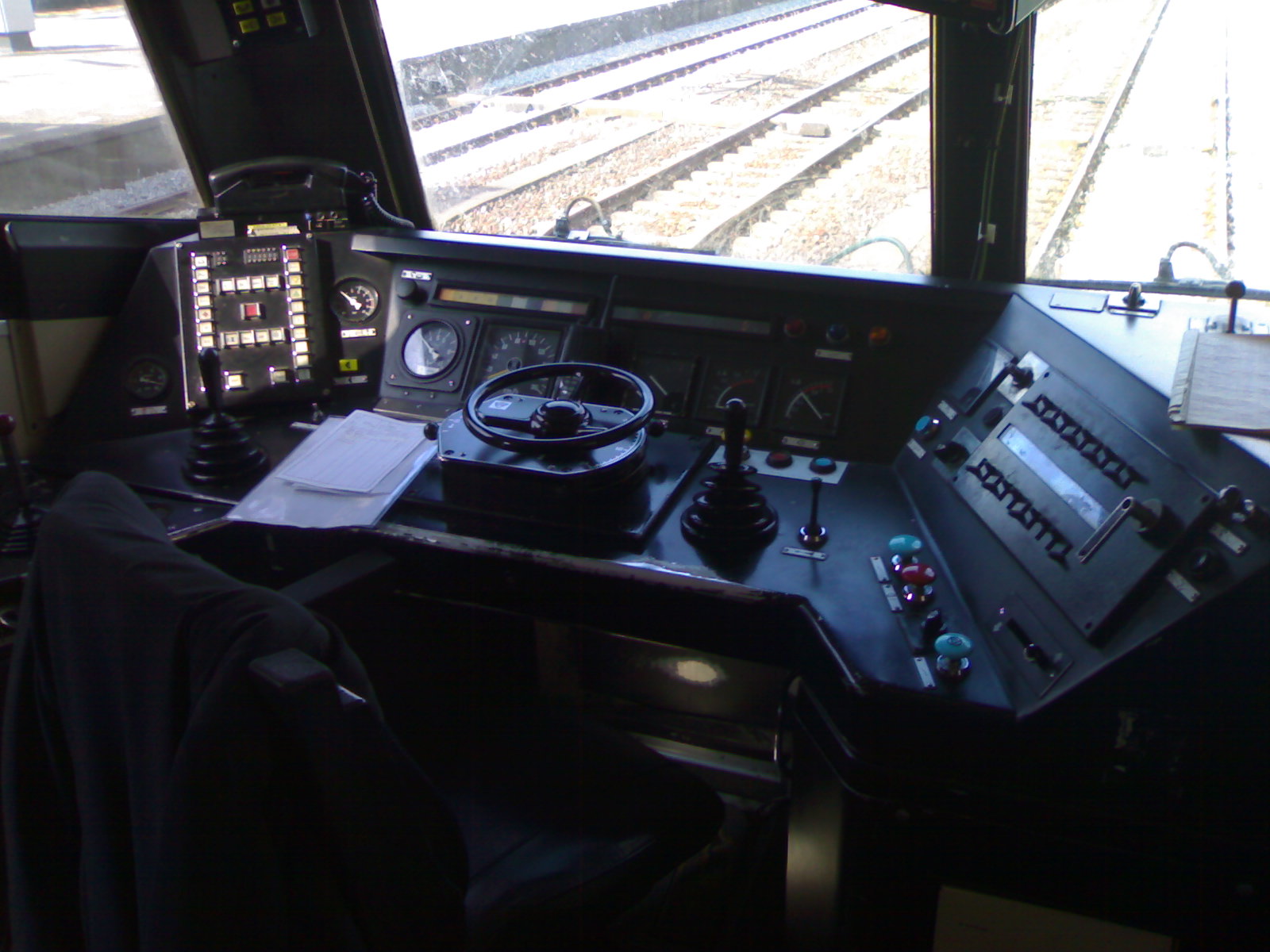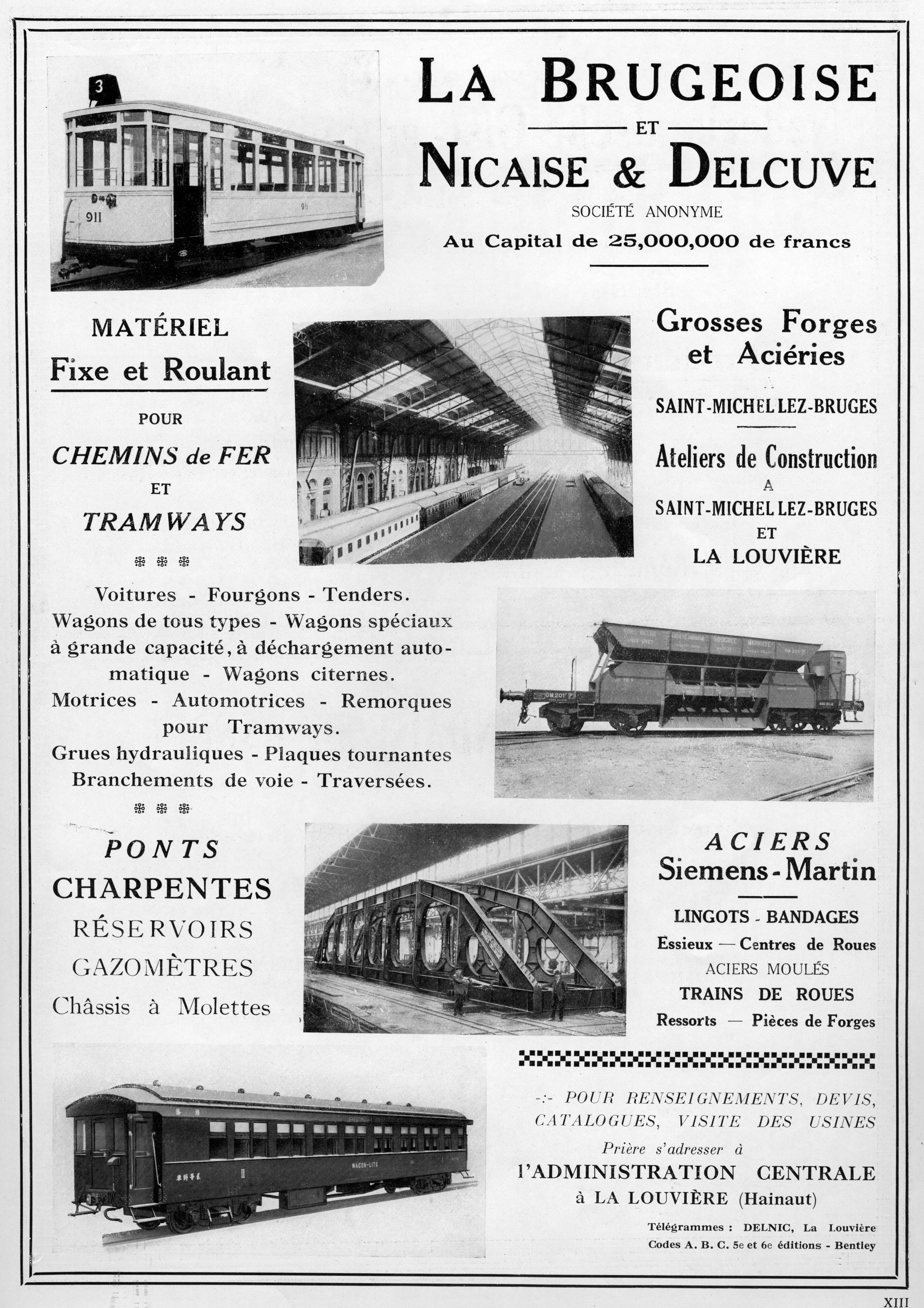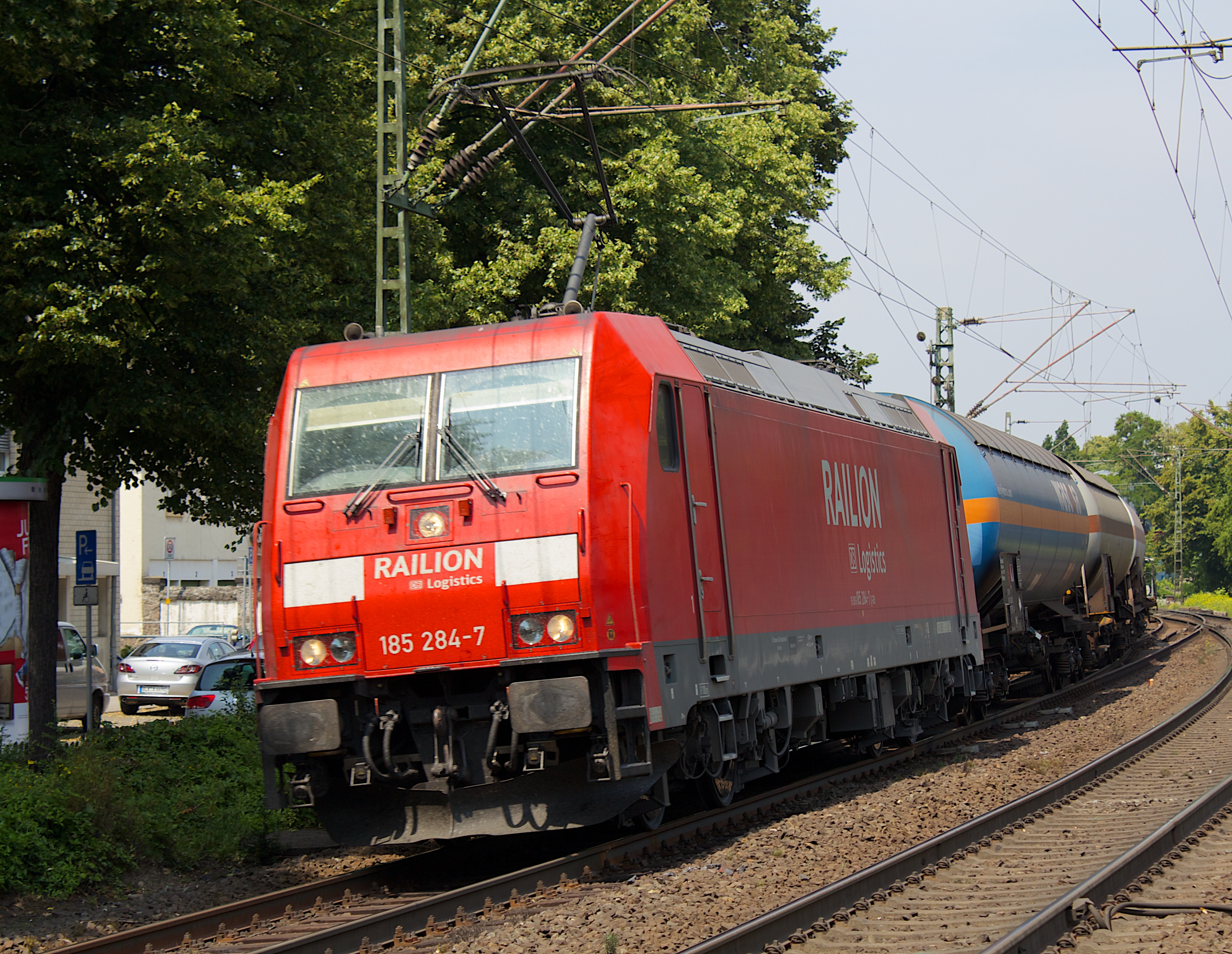|
Belgian Railways Class 11
Class 11 is part of the large 1980s family of 144 electric locomotives. The family was made up of Classes 11 (12), 12 (12), 21 (60) and 27 (60). Classes 11, 12 and 21 were nearly twice as powerful as Classes 22, 23 and 25 while Class 27 was more than twice as powerful as these 1950s locomotives. This family was heavily influenced by the Class 20² from the mid-1970s. They were very reliable because of the trial and error development of their predecessor. This family came into service with M4 and M5 coaching stock and the AM 80 and AM 86 series of EMUs. This generation was a major modernization of the NMBS/SNCB even if the older M2 coaching stock remained active for more than a decade before being replaced. The only real difference between a Class 11 and a Class 21 was the Class 11 had a transformer inside to allow working under both 3000 V DC in Belgium and 1500 V DC plus Dutch signalling and train protection for working in Holland. Externally they were identical to Cla ... [...More Info...] [...Related Items...] OR: [Wikipedia] [Google] [Baidu] |
La Brugeoise Et Nivelles SA
La Brugeoise et Nivelles, later BN Constructions Ferroviaires et Métalliques was a Belgian manufacturer of railway locomotives and other rolling stock; it was formed by a merger of two companies: La Brugeoise et Nicaise et Delcuve and Les Ateliers Métallurgiques de Nivelles. The company was acquired by Bombardier Transportation in 1988, plants in Nivelles and Manage closed in 1989 and 2000; as of 2011, the plant located in Bruges operated as Bombardier Transportation Belgium. History In 1851, Joseph De Jaegher founded a hardware store in the Burg in Bruges; in 1855, this expanded with a steel workshop on the Raamstraat, named ''Ateliers J. Jaegher''; in 1891, this merged with another steel making company in the nearby Gieterijstraat, the Usines Ferdinand Feldhaus, to form the Ateliers de Construction Forges et Aceries de Bruges. By 1900, the company was a major Belgian metal engineering company. In 1905, the company moved its plant and offices to a larger site with good rai ... [...More Info...] [...Related Items...] OR: [Wikipedia] [Google] [Baidu] |
SNCB Class AM86
french: Société nationale des chemins de fer belgesgerman: Nationale Gesellschaft der Belgischen Eisenbahnen , type = Statutory corporation , industry = Rail Transport , foundation = 1926 , founder = Government of Belgium , location = Avenue de la Porte de Hal/Hallepoortlaan 40 , location_city = 1060 Brussels , key_people = , products = Rail Transport , revenue = €2.296.6 billion (2012) , operating_income = €6.306,5 million (2012) , net_income = € -152.3 million (2012) , num_employees = 34,000 (2016) , parent = , subsid = BeNe Rail EurogareTrain World (BE)SNCB YPTO , location_country = Belgium , homepage = , foot_notes = The National Railway Company of Belgium ( nl, Nationale Maatschappij der Belgische Spoorwegen, or NMBS; french: Société nationale des chemins de fer belges, or SNCB; german: Nationale Gesellschaft der Belgischen Eisenbahnen) is ... [...More Info...] [...Related Items...] OR: [Wikipedia] [Google] [Baidu] |
Railway Locomotives Introduced In 1985
Rail transport (also known as train transport) is a means of transport that transfers passengers and goods on wheeled vehicles running on rails, which are incorporated in tracks. In contrast to road transport, where the vehicles run on a prepared flat surface, rail vehicles (rolling stock) are directionally guided by the tracks on which they run. Tracks usually consist of steel rails, installed on sleepers (ties) set in ballast, on which the rolling stock, usually fitted with metal wheels, moves. Other variations are also possible, such as "slab track", in which the rails are fastened to a concrete foundation resting on a prepared subsurface. Rolling stock in a rail transport system generally encounters lower frictional resistance than rubber-tyred road vehicles, so passenger and freight cars (carriages and wagons) can be coupled into longer trains. The operation is carried out by a railway company, providing transport between train stations or freight customer faciliti ... [...More Info...] [...Related Items...] OR: [Wikipedia] [Google] [Baidu] |
Electric Locomotives Of Belgium
Electricity is the set of physical phenomena associated with the presence and motion of matter that has a property of electric charge. Electricity is related to magnetism, both being part of the phenomenon of electromagnetism, as described by Maxwell's equations. Various common phenomena are related to electricity, including lightning, static electricity, electric heating, electric discharges and many others. The presence of an electric charge, which can be either positive or negative, produces an electric field. The movement of electric charges is an electric current and produces a magnetic field. When a charge is placed in a location with a non-zero electric field, a force will act on it. The magnitude of this force is given by Coulomb's law. If the charge moves, the electric field would be doing work on the electric charge. Thus we can speak of electric potential at a certain point in space, which is equal to the work done by an external agent in carrying a unit of positiv ... [...More Info...] [...Related Items...] OR: [Wikipedia] [Google] [Baidu] |
3000 V DC Locomotives
3 (three) is a number, numeral and digit. It is the natural number following 2 and preceding 4, and is the smallest odd prime number and the only prime preceding a square number. It has religious or cultural significance in many societies. Evolution of the Arabic digit The use of three lines to denote the number 3 occurred in many writing systems, including some (like Roman and Chinese numerals) that are still in use. That was also the original representation of 3 in the Brahmic (Indian) numerical notation, its earliest forms aligned vertically. However, during the Gupta Empire the sign was modified by the addition of a curve on each line. The Nāgarī script rotated the lines clockwise, so they appeared horizontally, and ended each line with a short downward stroke on the right. In cursive script, the three strokes were eventually connected to form a glyph resembling a with an additional stroke at the bottom: ३. The Indian digits spread to the Caliphate in the 9th ... [...More Info...] [...Related Items...] OR: [Wikipedia] [Google] [Baidu] |
1500 V DC Locomotives
Fifteen or 15 may refer to: *15 (number), the natural number following 14 and preceding 16 *one of the years 15 BC, AD 15, 1915, 2015 Music *Fifteen (band), a punk rock band Albums * 15 (Buckcherry album), ''15'' (Buckcherry album), 2005 * 15 (Ani Lorak album), ''15'' (Ani Lorak album), 2007 * 15 (Phatfish album), ''15'' (Phatfish album), 2008 * 15 (mixtape), ''15'' (mixtape), a 2018 mixtape by Bhad Bhabie * Fifteen (Green River Ordinance album), ''Fifteen'' (Green River Ordinance album), 2016 * Fifteen (The Wailin' Jennys album), ''Fifteen'' (The Wailin' Jennys album), 2017 * ''Fifteen'', a 2012 album by Colin James Songs *Fifteen (song), "Fifteen" (song), a 2008 song by Taylor Swift *"Fifteen", a song by Harry Belafonte from the album ''Love Is a Gentle Thing'' *"15", a song by Rilo Kiley from the album ''Under the Blacklight'' *"15", a song by Marilyn Manson from the album ''The High End of Low'' *"The 15th", a 1979 song by Wire Other uses *Fifteen, Ohio, a community in th ... [...More Info...] [...Related Items...] OR: [Wikipedia] [Google] [Baidu] |
Bo′Bo′ Locomotives
B-B and Bo-Bo are the Association of American Railroads (AAR) and British classifications of wheel arrangement for railway locomotives with four axles in two individual bogies. They are equivalent to the B′B′ and Bo′Bo′ classifications in the UIC system. The arrangement of two, two-axled, bogies is a common wheel arrangement for modern electric and diesel locomotives. Bo-Bo Bo-Bo is the UIC indication of a wheel arrangement for railway vehicles with four axles in two individual bogies, all driven by their own traction motors. It is a common wheel arrangement for modern electric and diesel-electric locomotives, as well as power cars in electric multiple units. Most early electric locomotives shared commonalities with the steam engines of their time. These features included side rods and frame mounted driving axles with leading and trailing axles. The long rigid wheelbase and the leading and trailing axles reduced cornering stability and increased weight. The Bo-Bo con ... [...More Info...] [...Related Items...] OR: [Wikipedia] [Google] [Baidu] |
National Railway Company Of Belgium Locomotives
National may refer to: Common uses * Nation or country ** Nationality – a ''national'' is a person who is subject to a nation, regardless of whether the person has full rights as a citizen Places in the United States * National, Maryland, census-designated place * National, Nevada, ghost town * National, Utah, ghost town * National, West Virginia, unincorporated community Commerce * National (brand), a brand name of electronic goods from Panasonic * National Benzole (or simply known as National), former petrol station chain in the UK, merged with BP * National Car Rental, an American rental car company * National Energy Systems, a former name of Eco Marine Power * National Entertainment Commission, a former name of the Media Rating Council * National Motor Vehicle Company, Indianapolis, Indiana, USA 1900-1924 * National Supermarkets, a defunct American grocery store chain * National String Instrument Corporation, a guitar company formed to manufacture the first resonator gui ... [...More Info...] [...Related Items...] OR: [Wikipedia] [Google] [Baidu] |
Bombardier TRAXX
Alstom Traxx (sold as Bombardier TRAXX before 2021) is a modular product platform of mainline diesel-electric and electric locomotives produced originally by Bombardier Transportation and later Alstom, which was built in both freight and passenger variants. The first version was a dual-voltage AC locomotive built for German railways from the year 2000. Later types included DC versions, as well as quadruple-voltage machines, able to operate on most European electrification schemes: 1.5/3.0 kV DC and 15/25 kV AC. The family was expanded in 2006 to include diesel-powered versions. Elements common to all variants include steel bodyshells, two bogies with two powered axles each, three-phase asynchronous induction motors, cooling exhausts on the roof edges, and wheel disc brakes. The TRAXX brand name itself was introduced in 2003. The acronym stands for ''Transnational Railway Applications with eXtreme fleXibility''. Locomotives were primarily made for the railways of Germany, with o ... [...More Info...] [...Related Items...] OR: [Wikipedia] [Google] [Baidu] |
NS Class 1100
The Class 1100 locomotives of Nederlandse Spoorwegen were a class of 1,500 V DC Bo′Bo′ electric locomotives, introduced from 1950. They were built by Alsthom to an original design of the French BB 8100. They operated in the Netherlands. They have been out of service since 1999, although many were out of service before then. They operated all services, freight and passenger, and were the NS' main locomotive until the arrival of Class 1600s. They were extensively rebuilt between 1978 and 1982. 1156 had an accident near Tilburg in 1961, and 1131 was involved in the largest railway accident in the Netherlands at Harmelen. 1129 was involved in an accident in Westervoort in 1978, this locomotive was not destroyed, and was put back in service. In 1986, 1141 derailed at Heeze. After the 1978 accident, the locomotives were rebuilt slightly to improve driver safety, with a crash-absorbing nose ahead of the cab inspired by the French 'Nez Cassé' design. In 1991, some of the locos ... [...More Info...] [...Related Items...] OR: [Wikipedia] [Google] [Baidu] |
Control Car (rail)
A control car, cab car (North America), control trailer, or driving trailer (UK and Ireland) is a non-powered rail vehicle from which a train can be operated. As dedicated vehicles or regular passenger cars, they have one or two driver compartments with all the controls and gauges required to remotely operate the locomotive, including exterior locomotive equipment such as horns, bells, ploughs, and lights. They also have communications and safety systems such as GSM-R or European Train Control System (ETCS). Control cars enable push-pull operation when located on the end of a train opposite its locomotive by allowing the train to reverse direction at a terminus without moving the locomotive or turning the train around. Control cars can carry passengers, baggage, and mail, and may, when used together with diesel locomotives, contain an engine-generator set to provide head-end power (HEP). They can also be used with a power car or a railcar. European railways have used control c ... [...More Info...] [...Related Items...] OR: [Wikipedia] [Google] [Baidu] |





.jpg)
